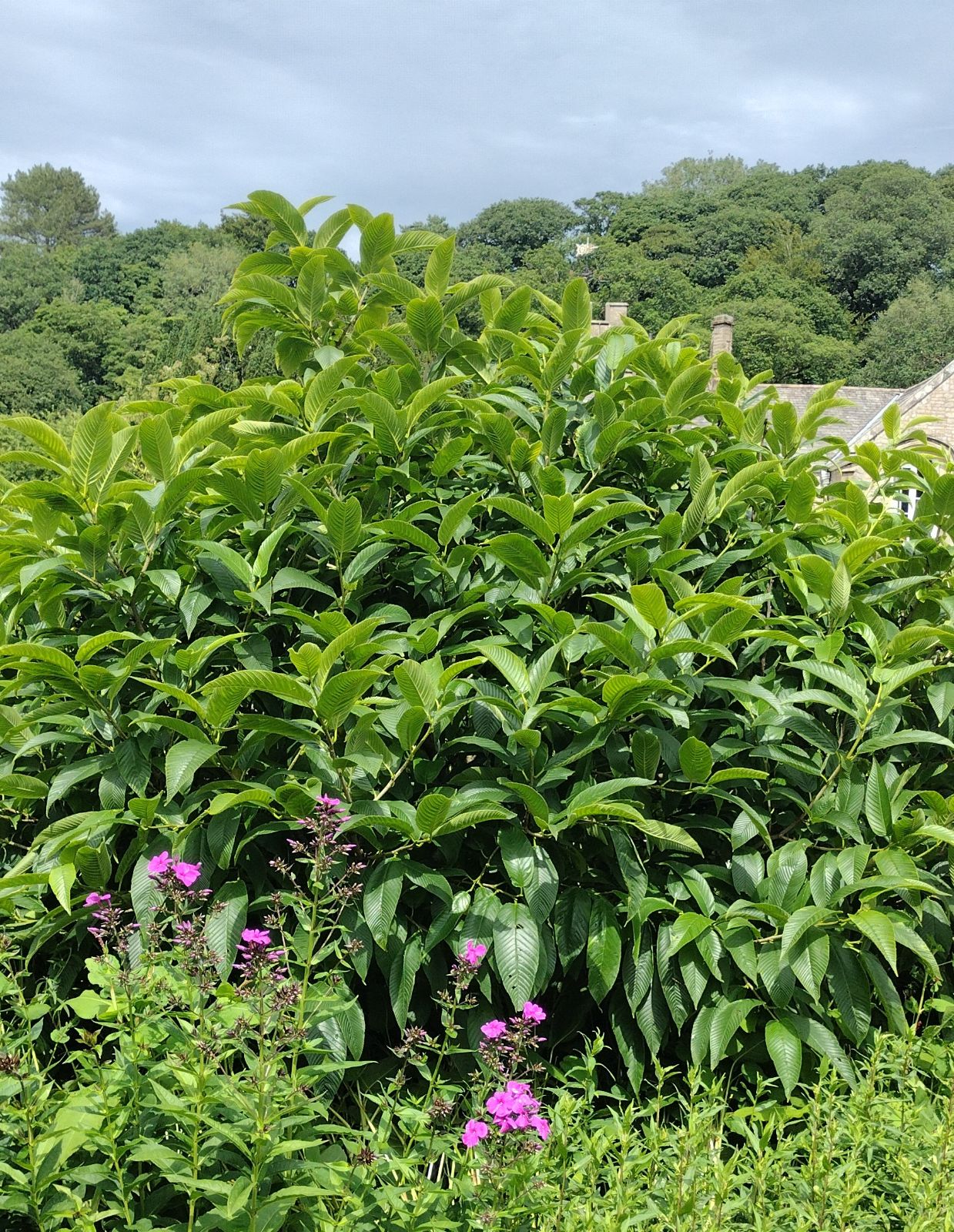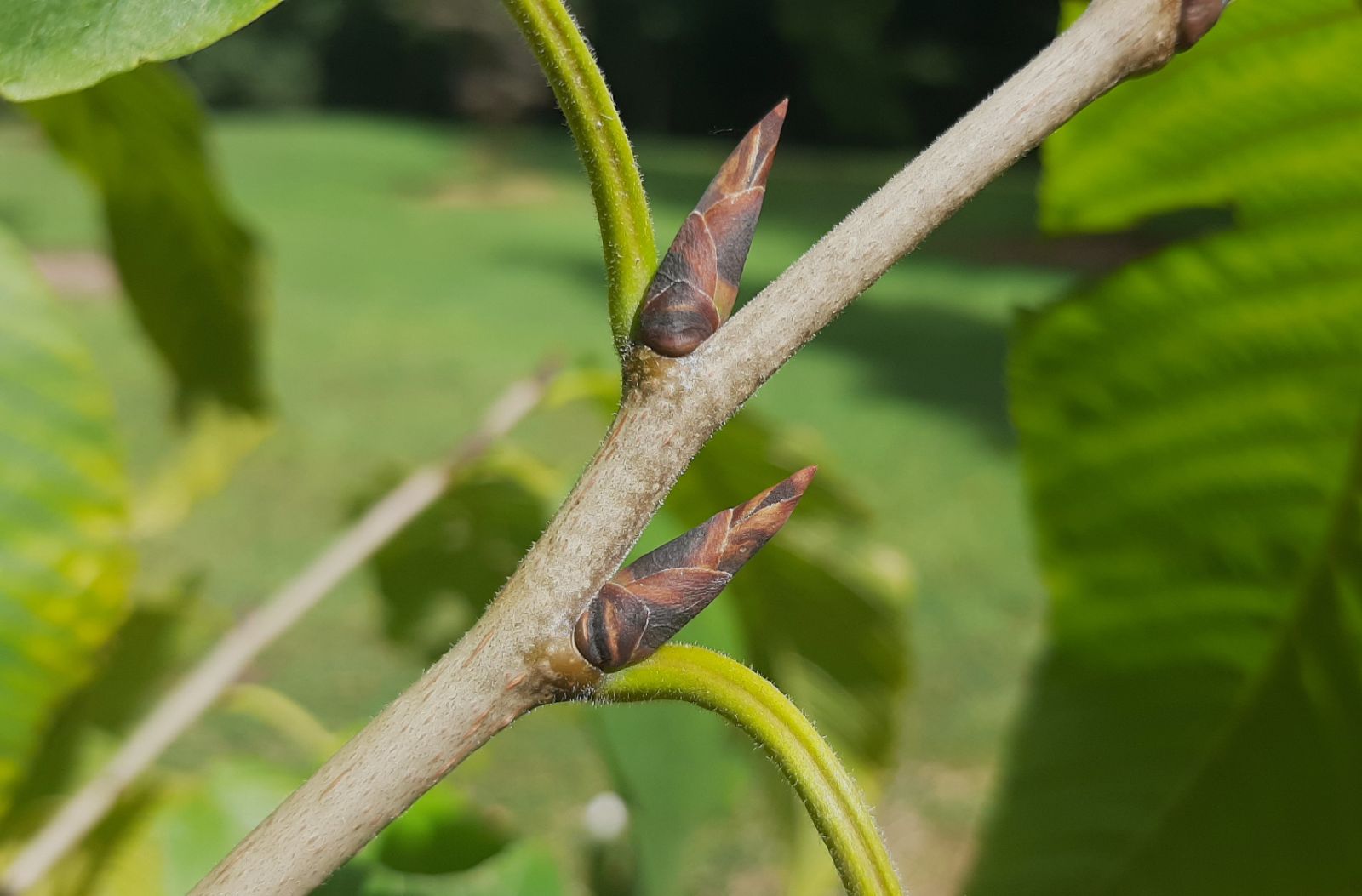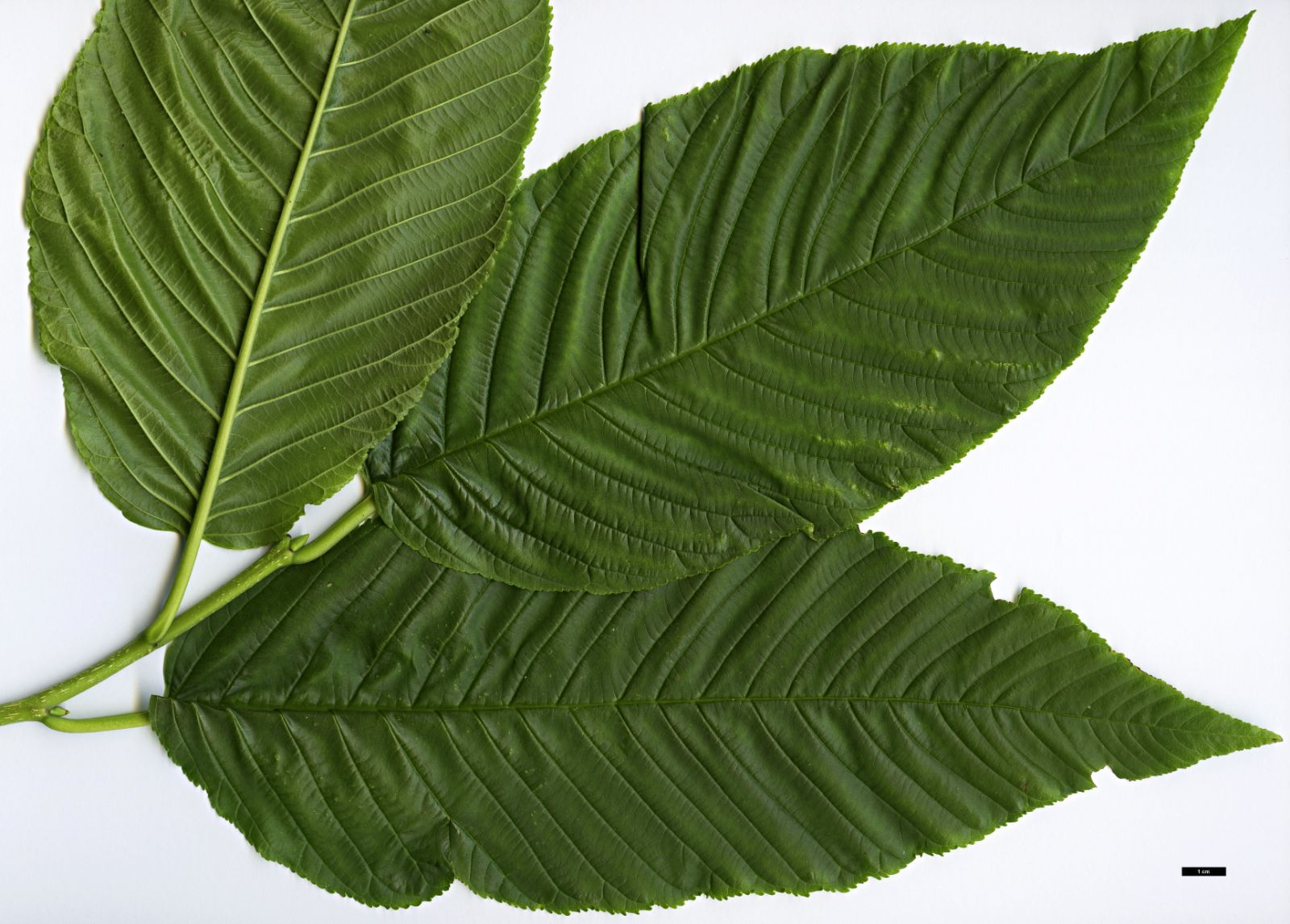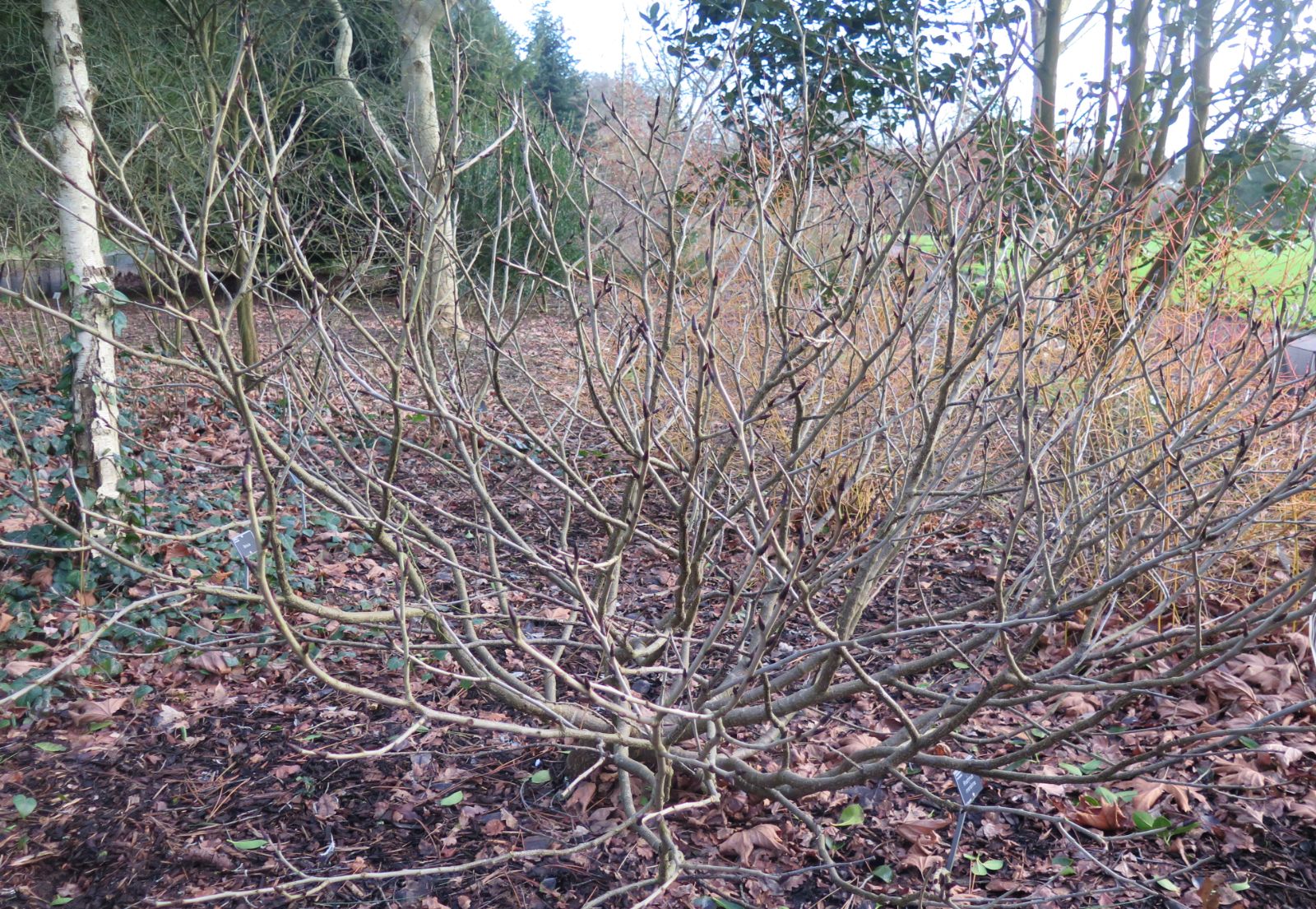Rhamnus imeretina
Credits
Article from Bean's Trees and Shrubs Hardy in the British Isles
Recommended citation
'Rhamnus imeretina' from the website Trees and Shrubs Online (treesandshrubsonline.
Genus
Infraspecifics
Other taxa in genus
- Rhamnus alaternus
- Rhamnus alnifolia
- Rhamnus arguta
- Rhamnus californica
- Rhamnus cathartica
- Rhamnus costata
- Rhamnus davurica
- Rhamnus fallax
- Rhamnus frangula
- Rhamnus × hybrida
- Rhamnus infectoria
- Rhamnus japonica
- Rhamnus lanceolata
- Rhamnus pumila
- Rhamnus purshiana
- Rhamnus rupestris
- Rhamnus saxatilis
- Rhamnus tinctoria
- Rhamnus utilis
A deciduous shrub up to 10 ft high, with very sturdy shoots sparsely downy when young. Leaves oblong or oval, rounded or slightly heart-shaped at the base, taper-pointed, finely toothed, 4 to 10 in. long, 2 to 4 in. wide, veins parallel in fifteen to twenty-nine pairs, upper surface dark green and soon glabrous, except in the sunken midrib and veins; lower surface downy, especially on the veins; stalk 1⁄2 to 3⁄4 in. long, downy. Flowers green, in small, axillary clusters. Fruits 2⁄5 in. long. Bot. Mag., t. 6721.
Native of the western Caucasus up to 8,500 ft, and of N.E. Anatolia; introduced to western Europe in the 1850s by the nurseryman James Booth of Flottbeck near Hamburg. He apparently listed it as R. imeretina in his catalogue but the name was first validated by Kirchner in Arboretum Muscaviense (1864), a descriptive catalogue of the trees and shrubs growing in the Muskau Arboretum, Germany. It was introduced to Britain in 1879 and at first confused with R. libanotica (see below).
R. imeretina is a very handsome, large-leaved, quite hardy shrub – the finest of all the buckthorns. The leaves may occasionally be as much as 14 in. long and 6 in. wide. The leaves die off a deep bronzy purple in the autumn.




